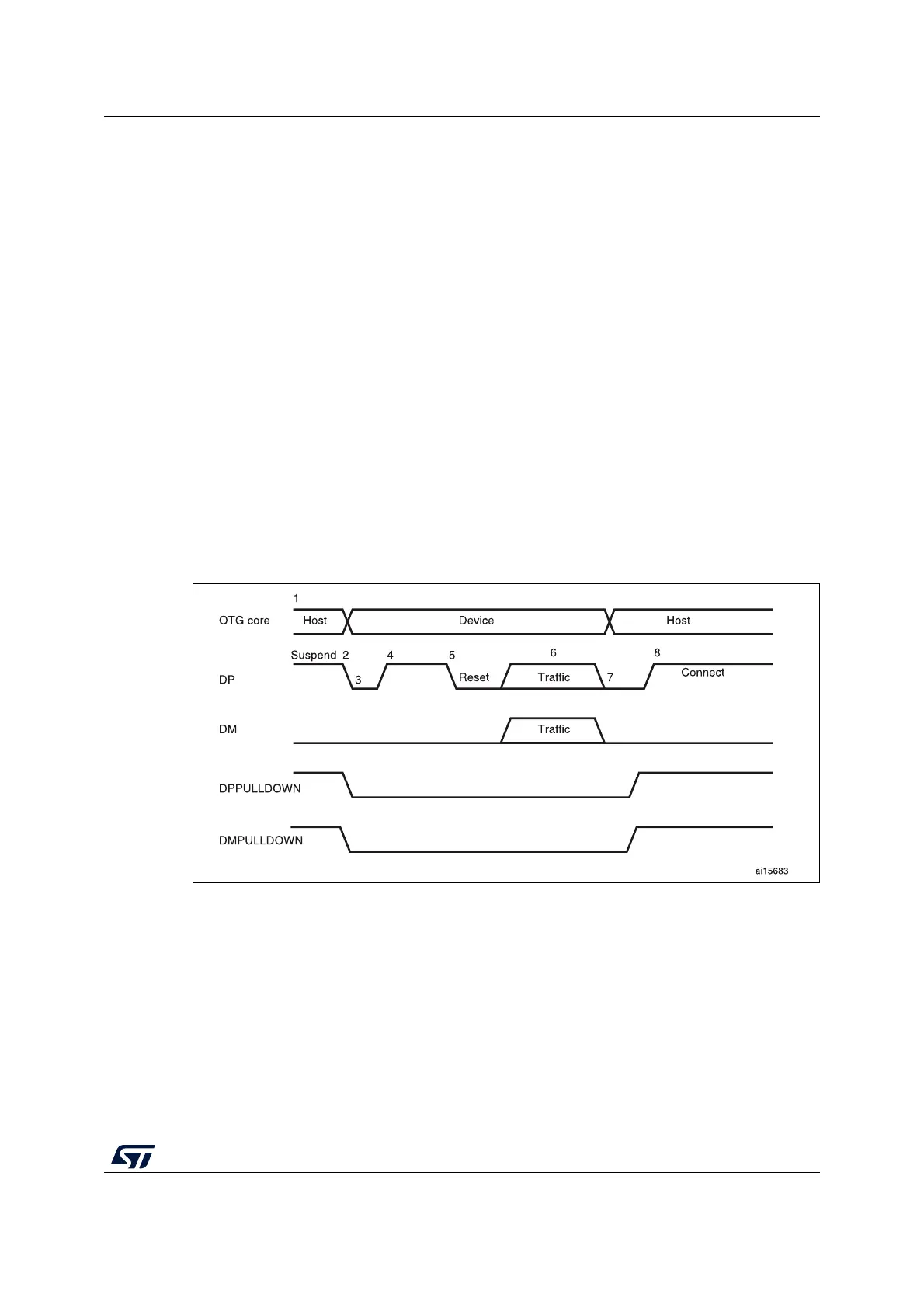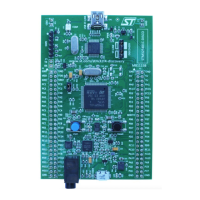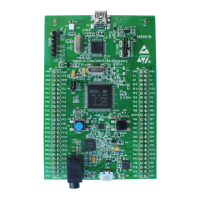RM0402 Rev 6 1119/1163
RM0402 USB on-the-go full-speed (OTG_FS)
1122
time can be obtained from the transceiver vendor and varies from one transceiver to
another.
3. The OTG_FS core informs the PHY to speed up V
BUS
discharge.
4. The application initiates SRP by writing the session request bit in the OTG control and
status register. The OTG_FS controller perform data-line pulsing followed by V
BUS
pulsing.
5. The host detects SRP from either the data-line or V
BUS
pulsing, and turns on V
BUS
.
The PHY indicates V
BUS
power-on to the device.
6. The OTG_FS controller performs V
BUS
pulsing.
The host starts a new session by turning on V
BUS
, indicating SRP success. The
OTG_FS controller interrupts the application by setting the session request success
status change bit in the OTG interrupt status register. The application reads the session
request success bit in the OTG control and status register.
7. When the USB is powered, the OTG_FS controller connects, completing the SRP
process.
A-device host negotiation protocol
HNP switches the USB host role from the A-device to the B-device. The application must set
the HNP-capable bit in the core USB configuration register to enable the OTG_FS controller
to perform HNP as an A-device.
Figure 357. A-device HNP
1. DPPULLDOWN = signal from core to PHY to enable/disable the pull-down on the DP line inside the PHY.
DMPULLDOWN = signal from core to PHY to enable/disable the pull-down on the DM line inside the PHY.
The following points refer and describe the signal numeration shown in the Figure 357:
1. The OTG_FS controller sends the B-device a SetFeature b_hnp_enable descriptor to
enable HNP support. The B-device’s ACK response indicates that the B-device
supports HNP. The application must set host Set HNP enable bit in the OTG control

